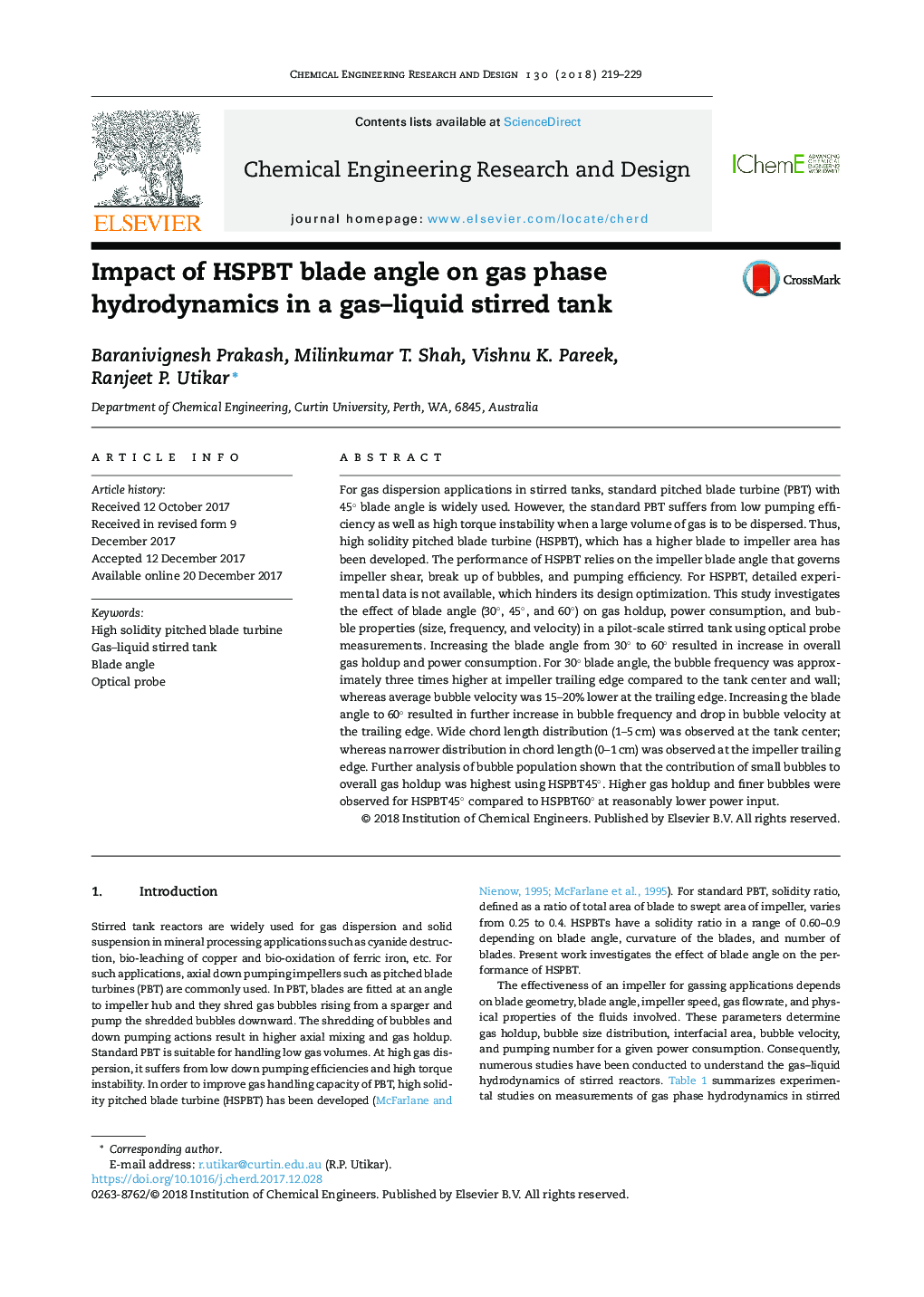| Article ID | Journal | Published Year | Pages | File Type |
|---|---|---|---|---|
| 7006140 | Chemical Engineering Research and Design | 2018 | 11 Pages |
Abstract
For gas dispersion applications in stirred tanks, standard pitched blade turbine (PBT) with 45° blade angle is widely used. However, the standard PBT suffers from low pumping efficiency as well as high torque instability when a large volume of gas is to be dispersed. Thus, high solidity pitched blade turbine (HSPBT), which has a higher blade to impeller area has been developed. The performance of HSPBT relies on the impeller blade angle that governs impeller shear, break up of bubbles, and pumping efficiency. For HSPBT, detailed experimental data is not available, which hinders its design optimization. This study investigates the effect of blade angle (30°, 45°, and 60°) on gas holdup, power consumption, and bubble properties (size, frequency, and velocity) in a pilot-scale stirred tank using optical probe measurements. Increasing the blade angle from 30° to 60° resulted in increase in overall gas holdup and power consumption. For 30° blade angle, the bubble frequency was approximately three times higher at impeller trailing edge compared to the tank center and wall; whereas average bubble velocity was 15-20% lower at the trailing edge. Increasing the blade angle to 60° resulted in further increase in bubble frequency and drop in bubble velocity at the trailing edge. Wide chord length distribution (1-5 cm) was observed at the tank center; whereas narrower distribution in chord length (0-1 cm) was observed at the impeller trailing edge. Further analysis of bubble population shown that the contribution of small bubbles to overall gas holdup was highest using HSPBT45°. Higher gas holdup and finer bubbles were observed for HSPBT45° compared to HSPBT60° at reasonably lower power input.
Keywords
Related Topics
Physical Sciences and Engineering
Chemical Engineering
Filtration and Separation
Authors
Baranivignesh Prakash, Milinkumar T. Shah, Vishnu K. Pareek, Ranjeet P. Utikar,
